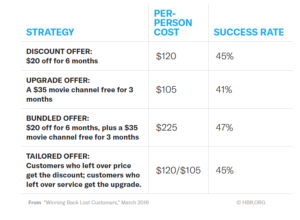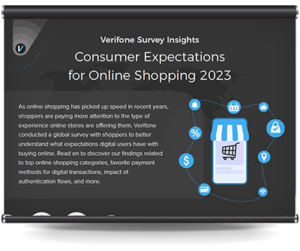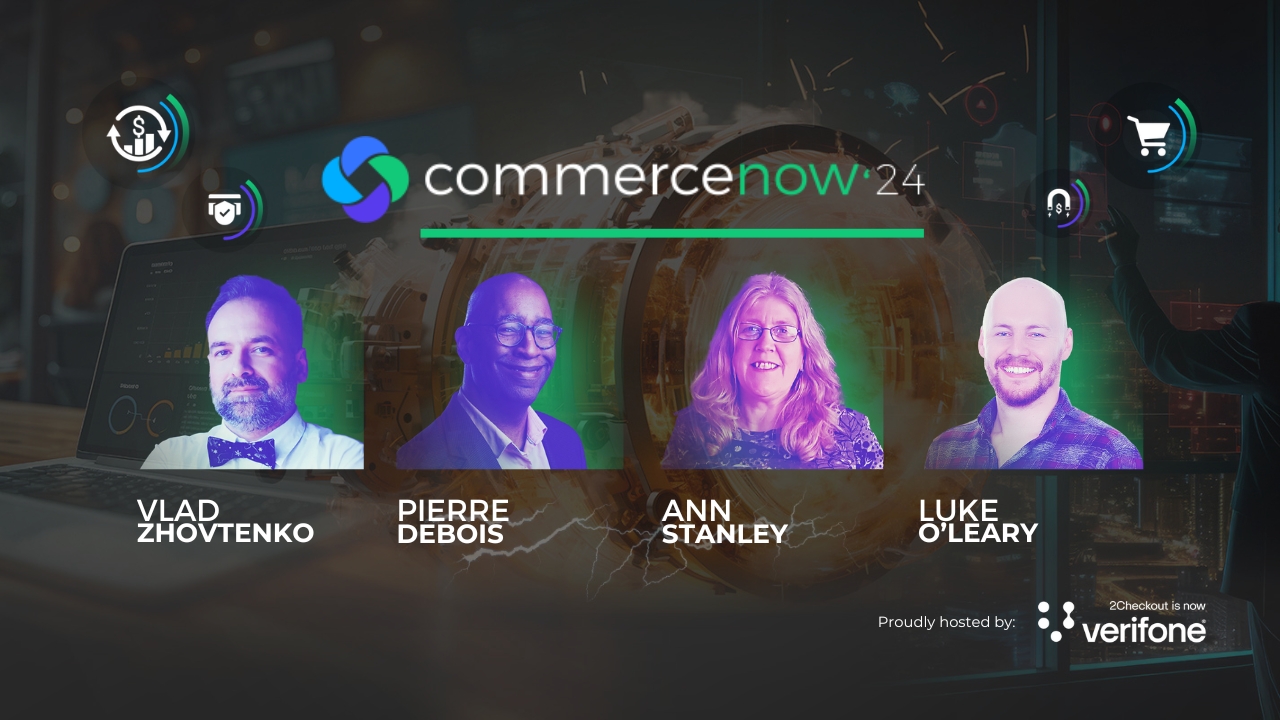The battle for customer loyalty is one of any B2C or B2B business’s greatest challenges. It’s an unpleasant reality that businesses must face – there is no guarantee that customers will stick around, even if they love your product or service.
With today’s hyper-competitive marketplace, consumers are spoiled for choice, so retaining customer loyalty must be your top priority.
Taking the time to devise customer win-back strategies will go a long way towards generating more revenue and help build long-term relationships with lost customers, further increasing your business’s long-term success.
The good news is that winning back customers can be more cost-effective than acquiring new ones.
Studies have shown that implementing a targeted win-back strategy can recover 26% of lost clients while simultaneously doubling their lifetime value. It was also shown to be a more cost-efficient alternative to traditional customer acquisition, costing 5-6 times less to retain an old customer versus acquiring a new one.
A win-back program allows your business to reactivate previously lost clients by offering a reward in exchange for a particular action – such as renewing a subscription or repurchasing a product/service.
In this article, we will explore the importance of winning back lost customers and provide tips and strategies for crafting an effective win-back program.
IMPORTANT: Does Your Company Allow for Failure?
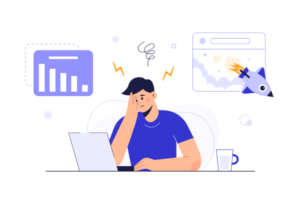
Although many companies likely benefit from winning back lost customers, company cultures often present a hurdle to successful customer reacquisition management.
To this day, organizations operate with a zero-tolerance-for-failure culture – pushing employees to treat failure “as indicators of poor performance, negligence, or as lack of competence” This can lead to employees being overly cautious when addressing customer defection in fear of losing their job, a bonus or promotion.
So, before reading any further, ask yourself this question, “Is failure accepted within my organization?” if it isn’t, taking steps towards creating and developing a failure-tolerant culture will skyrocket your chances of having your employees go to great lengths to win back customers.
Why Do Customers Churn?
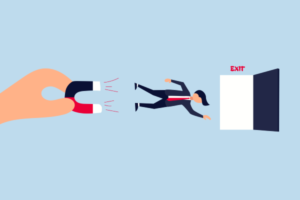
Before we start, let’s define Churn Rate. In a nutshell, it’s the rate at which customers stop doing business with an entity; in other words, when customers stop buying products or services from your business.
Now, the first step in winning back your customers is to understand why they left in the first place. If you skip this critical step, you will shoot in the dark, trying out various win-back strategies with a low probability of success.
Getting to the bottom of issues will allow you to determine the right course of action, arming you with the knowledge you need to get customers to re-engage with your business.
Here is a list of common reasons customers leave:
- Wrong target audience to begin with;
- Poor brand experience;
- Too expensive;
- Infrequent product use;
- Product not delivering on your brand promise.
It’s important to note that customer churn is inevitable, but it certainly isn’t all bad. There is no “one-size-fits-all” solution to getting customers back.
Uncovering the reasons or factors that lead customers to churn fuels your strategy for creating customized win-back strategies according to the specific needs of your customers.
Consider customer churn as a wake-up call for your business – a way to bounce back and provide more value to your customers.
Additionally, don’t stress about reaching out to customers right after they leave, but rather use that time period to collect feedback on their experience with the brand. Research shows that action taken towards winning back customers immediately after customers are emotionally hurt will only increase their dissatisfaction – so take your time crafting the perfect solution to win them back; they will slowly come to reason.
How To Win Back Customers (+Examples)
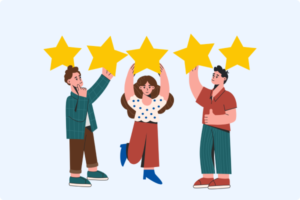
Below is a guide for you to try when attempting to win back your lost customers. Remember, a lost customer does not mean a failed relationship; simply temporarily paused.
This is your chance to extend the customer journey and rekindle the relationship back to life, but you can only do so by truly understanding the needs of your customers.
Start With a Survey
As mentioned above, knowing why your customers left is step one. Surveys provide a plethora of valuable information: from past experience of customers using your product/service to critical feedback on improving your offerings.
Accessing survey data across every stage in the customer lifecycle will provide insights into your product/service features, pricing and customer experience, allowing you to tailor your offering to meet the customer’s needs – hopefully winning them back!
Set up an automatic email sequence that politely asks customers to fill in a ‘mini-survey’ to help improve your business offerings.
Ask questions such as:
- Why did you decide to become our customer?
- What did you like most about our brand/product/service?
- (if they already left) What caused you to leave?
- (if they already left) Which competitor did you shift to?
- (if they already left) How can we earn your respect back?
If you’re a SaaS provider, chances are your subscription management partner may have the capabilities to inquire about user reasoning for exit during the subscription cancellation process.
This is your opportunity to learn about the value you are providing your customers and how you can give them even more. Take customer feedback seriously and watch your business grow to new heights.
Filter For Higher Life Time Value Customers
It’s not feasible to win back every customer, nor does it make sense to spend the budget for that. Using the information from your customer feedback survey, you can pick out the most likely candidates, based on their previous behavior and data, with the highest chance of returning.
A study by Marketing Metrics shows that businesses have up to a 20-40% chance of winning back lost customers, compared to a 5-20% chance of acquiring a new one. They also evaluate the revenue impact of effective win-back strategies to an average of $485K for small businesses.
To achieve these metrics for your business, you must take a personalized approach to address your customers’ needs. While not all lost customers are worth the reacquisition costs, some can still bring great value to your business.
Certain customer categories more likely to return are the ones who:
- Referred your product or services to others;
- Never/seldom issued past complaints;
- Experienced exceptional customer service;
- Canceled due to budget restraints rather than inadequate customer service.
Taking the gathered survey information and focusing on customers who have engaged/purchased with/from your brand more in the past will take priority over first-time customers.
Tailor your offer to meet the unmet needs of your customers. For example, if a customer noted “emotional dissatisfaction” with your business, investing resources into relationship-building strategies will provide a greater return on investment than dropping your prices.
However, if a customer noted “cost issues” as their reason for leaving, offering a discount can be a better stimulant in winning them back.
Perfect The CTA (Call-To-Action)
According to a study in Harvard Business Review, pitching the right offers at the right time is critical in winning back customers. In this study, a telecom company tested 4 win-back strategies for over 40K customers; the following are their findings:
Diving deeper, below are other win-back strategies you can try out.
Rewards for Loyalty
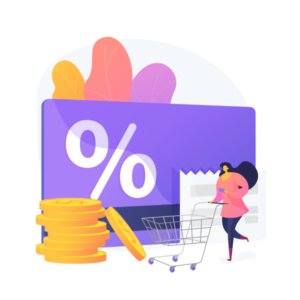
If you want to win back customers, creating a loyalty program to incentivize them to keep coming back for more – and even refer friends – is a surefire way to increase repeat customers and generate additional revenue.
Consider offering free shipping, early access, digital gifts, unique promo codes or a more tailored reward. The more creative you get, the higher your chance of standing out among competitors and securing customers’ brand loyalty.
Options to Pause Subscription
Sometimes, consumers need to take a break. If you offer a high-ticket product/service or rely on a subscription business model, providing flexibility and understanding of your customer’s temporary issue, such as a tight budget or a busy schedule, can be an effective way to retain customers.
To make this process convenient, provide clear instructions and follow-up after the pause period to encourage them to re-subscribe.
Added Upgrades
Offering additional services/features to customers as part of their current deal is another way to win back lost customers. Consider creating a tiered pricing model that benefits customers who upgrade to a higher subscription or offer a flat rate discount on existing services that might add value to their current plan.
Services/features can make customers feel like they are getting more for what they are paying for and, therefore, more likely to continue to stay on as a customer.
Keeping Customers Impressed and Engaged

So far, we’ve discussed strategies for returning lost customers to your business. However, this is a reactive approach and not a proactive one – catching your customers before they leave is a much more effective and cost-efficient approach in the first place.
The best to achieve this is to: (I) add value and (II) provide exceptional customer service.
- 77% of consumers stay loyal due to the quality of products and services offered.
- In 89% of cases, poor customer service is one of the top reasons customers leave.
Identify at-risk customers (those most likely to leave) and target them with re-engagement email campaigns. Remind them of your product/service, and offer them an incentive to continue staying on – providing exceptional customer support and customer experience will make or break the relationship.
By taking the time to understand your customers and, in turn, providing them with added value, you increase the chance of them becoming brand loyal. This highlights the importance of customer engagement and shines a light on the reasons why customer support is the cornerstone of a successful business.
Conclusion
In today’s hyper-competitive marketplace, losing customers is not something businesses can afford. As discussed, winning back lost customers can be a cost-effective way to boost revenue and build long-term relationships.
However, it’s often not enough to simply slash prices or send out a generic re-engagement email campaign. The key to success lies in understanding why your customers left in the first place and tailoring a win-back strategy that addresses their needs.
Additionally, creating a failure-tolerant culture within your organization will be critical in empowering your employees to take risks and go the extra mile to win back customers without fearing punishment.
Remember, churn rate isn’t all negative. By taking the time to understand how you can improve your offerings, and pairing that with the strategies above, alongside exceptional customer service, you can be sure to turn a churned customer into a loyal advocate for your business.
Read our Consumer Expectations for Online Shopping 2023 Report to learn more about how to keep customers engaged and satisfied in today’s market.


